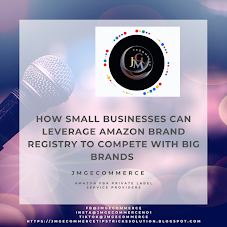Defensive PPC: How to Guard Your Brand & Listing from Competitors
If you're an Amazon seller, you've likely seen competitor ads showing up right on your own product detail pages (PDPs). Worse, they might even be bidding on your brand name to siphon off traffic. This is where defensive PPC advertising becomes not just a tactic, but a necessity.
In this post, we'll break down what defensive PPC is, why it matters, and how you can use it to protect your brand and listings effectively.
What is Defensive PPC?
Defensive PPC refers to the use of pay-per-click advertising strategies to protect your own brand space from being taken over by competitors. Instead of solely focusing on attacking new keywords or audiences, this strategy aims to ensure that your brand real estate remains yours.
Think of it like placing guards at every entrance to your store so no one else can hand out their flyers to your customers.
Why Defensive PPC is Important
- Protect Your Sales Funnel: If a competitor places an ad on your PDP, they could steal customers who are already close to purchasing from you.
- Preserve Brand Credibility: When users search your brand and see competitor ads first, it weakens your authority.
- Lower Hijacking Risk: Hijackers often ride the traffic wave of branded listings. Defending your listings can deter unauthorized sellers.
Let’s look at real scenarios.
Example Scenario 1: Competitor Ads on Your PDP
Imagine you're selling a popular organic dog shampoo. You've built a loyal customer base and rank well for your brand keyword.
One day, you notice a competitor's product showing up in the "Sponsored Products Related to This Item" carousel on your listing.
Solution: Run product targeting ads on your own ASINs. This way, the ad slots on your PDPs show your own product variations or complementary items, not a rival's.
Example Scenario 2: Competitor Bidding on Your Brand Name
You search for your brand name "Paws & Pure" and the top sponsored result is not your product, but a competitor’s similar offering.
Solution: Launch a branded keyword campaign targeting variations of your brand name (e.g., "Paws and Pure", "Paws & Pure Shampoo"). Use exact and phrase match types to cover your branded traffic.
This ensures your product shows up first when customers search your brand.
How to Implement a Defensive PPC Strategy
1. Branded Keyword Campaigns
- Target your exact brand name and high-converting SKUs.
- Use exact and phrase match types.
- Separate campaigns for different product lines or categories.
2. Product Targeting Ads
- Target your own ASINs.
- Use this on your best sellers and variations.
- Keep CPCs competitive to outbid potential competitors.
3. Category Refinement
- Narrow your targeting to only your brand or product class.
- Helps you avoid wasting spend on irrelevant traffic.
4. Monitoring and Optimization
- Check PDPs regularly for competing sponsored placements.
- Review Search Term Reports to identify if competitors are targeting your brand.
- Adjust bids and budgets accordingly.
Final Thoughts
Defensive PPC is not about aggression—it's about protection. By using smart advertising tactics like brand keyword targeting and product targeting ads, you ensure that your customers stay focused on your brand, not the competition.
Protect the ground you’ve worked hard to win. Invest in defensive PPC and turn your listings into strongholds, not battlegrounds.
Pro Tips
- Add A+ Content and Brand Story to occupy more space on your PDP.
- Use Sponsored Brands ads with your logo and custom headline.
- Leverage Amazon Brand Analytics to see who's targeting you.
Prepared By: Junaid Masood
Our Project Demos:
#AmazonPPC #TopOfSearch #MarketingStrategy #EcommerceGrowth #DigitalAdvertising
#AmazonFBA #PPCStrategy #TopOfSearch #MarketingTips #AmazonAdvertising #SmartSpending #EcommerceHacks #AmazonSellerTools
Reach us:
Instagram: / jmgecommerceno1
Facebook: / jmgecommerceno1
Youtube: / @jmgecommerce
Blog: https://jmgecommercetipstrickssolutio...
TikTok: TikTok @JMGEcommerce









